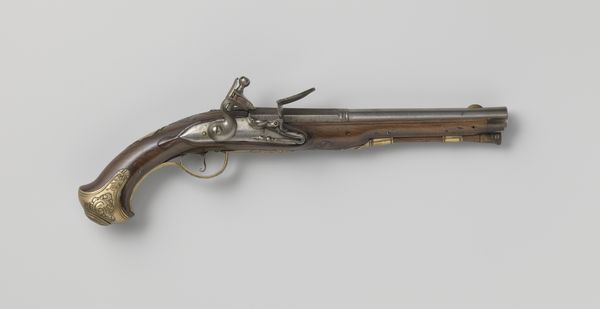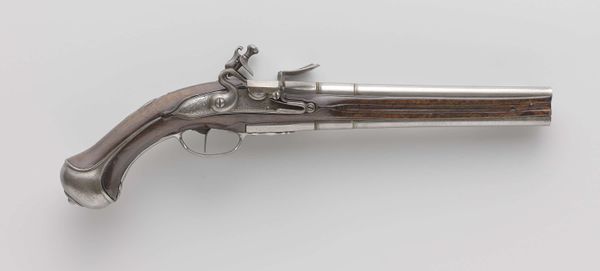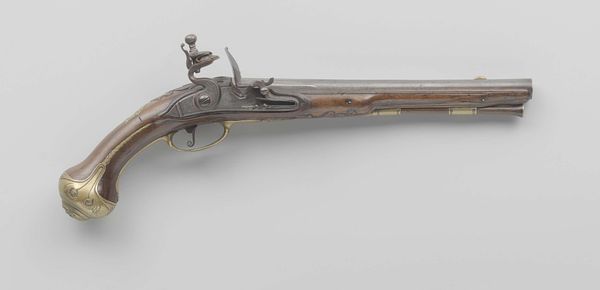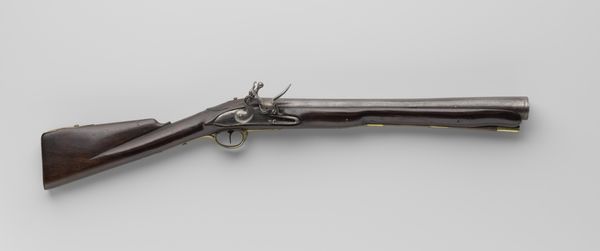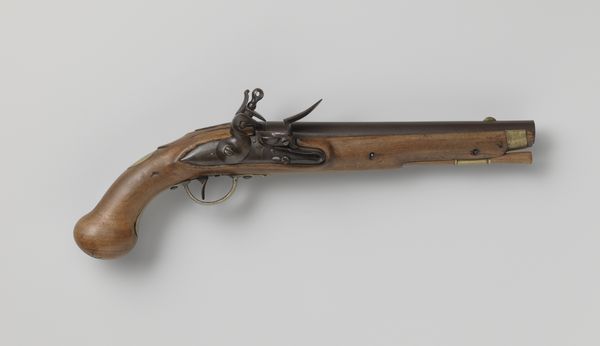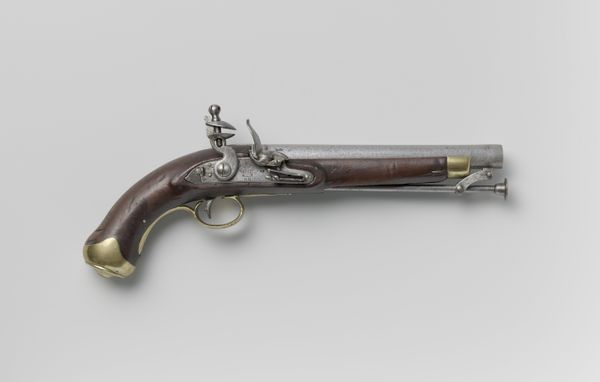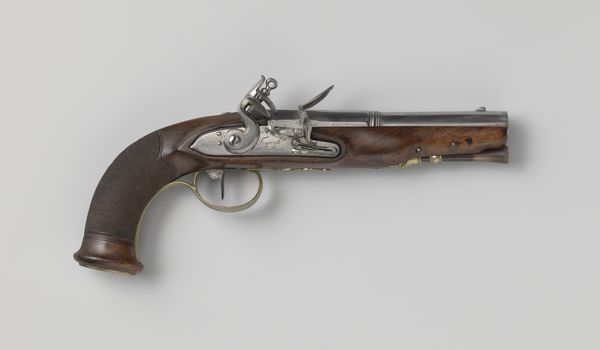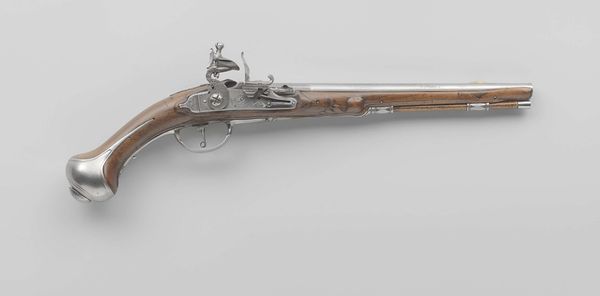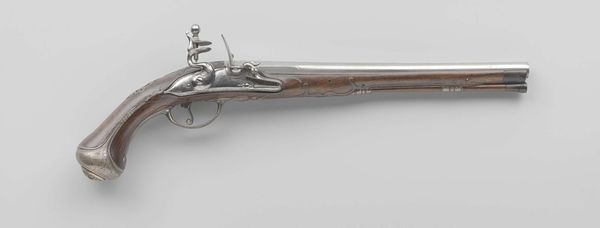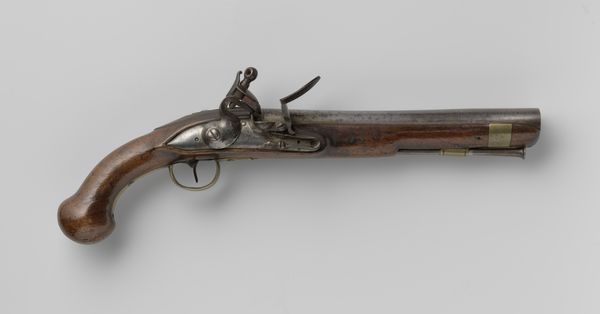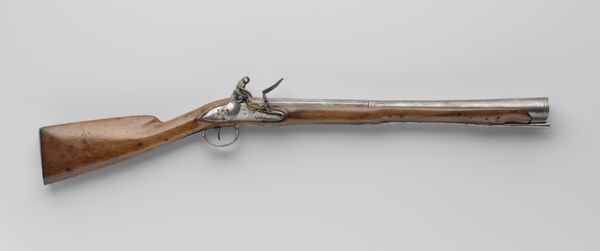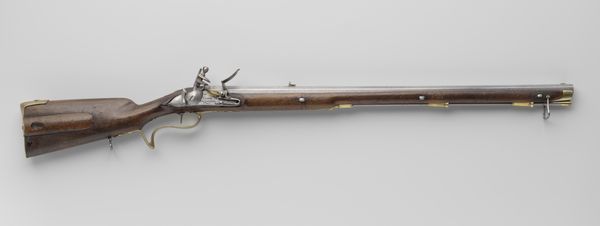
Vuursteen cavaleriepistool Staatse leger 1780 - 1790
0:00
0:00
koninklijkegeweerfabriekculemborg
Rijksmuseum
Dimensions: length 42.9 cm, length 25.9 cm, diameter 17.7 mm
Copyright: Rijks Museum: Open Domain
Editor: Here we have a flintlock cavalry pistol made for the Dutch army sometime between 1780 and 1790 by the Koninklijke Geweerfabriek Culemborg. The pistol is made from wood, metal, and brass. What’s interesting to me is how a weapon can also be a beautifully crafted object. How do you see this object? Curator: As a materialist, I'm interested in the production of this object, right from its constituent parts and how those connect to available resources. Where was the wood sourced, the metal mined? Were these materials acquired through trade or colonial exploitation? Who were the laborers involved in each step, from raw material extraction to the final assembly and finishing of the weapon? This shifts the focus from solely aesthetic appreciation to the social relations embedded in its creation. Editor: That makes a lot of sense. The artist has essentially worked with different materials that have origins, histories, in diverse locations... So how might this lens affect how we view the "art" status? Curator: Well, we must consider it beyond traditional art categories. The hierarchical distinction between “art” and “craft” becomes problematic. Traditionally, objects like this, while displaying skillful craftsmanship, are often relegated to the realm of functional artifacts. But isn't the expertise involved in crafting this weapon – the metallurgical knowledge, the woodworking skills, the precision engineering – deserving of recognition as a form of material intelligence? The Baroque influence complicates that. The decorative elements are designed to impress, elevating the pistol beyond pure utility. What does it tell you about the market for arms? Editor: It challenges the idea of the solitary artist and focuses instead on collaborative and industrial aspects... Something that perhaps the Baroque ornamentation sought to overshadow... Curator: Exactly! It's about acknowledging the social and economic conditions that make such an object possible. Editor: That makes me reconsider how museums label craftsmanship. Thanks for your insights. Curator: A fascinating shift isn't it, once you look through that production lens!
Comments
No comments
Be the first to comment and join the conversation on the ultimate creative platform.
